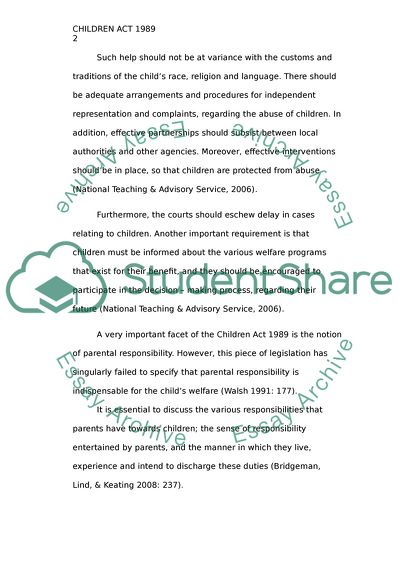Cite this document
(Success Of The Children Act 1989 In Protecting Childrens Rights Essay, n.d.)
Success Of The Children Act 1989 In Protecting Childrens Rights Essay. Retrieved from https://studentshare.org/sociology/1730638-critically-evaluate-the-success-of-the-children-act-1989-in-protecting-childrens-rights
Success Of The Children Act 1989 In Protecting Childrens Rights Essay. Retrieved from https://studentshare.org/sociology/1730638-critically-evaluate-the-success-of-the-children-act-1989-in-protecting-childrens-rights
(Success Of The Children Act 1989 In Protecting Childrens Rights Essay)
Success Of The Children Act 1989 In Protecting Childrens Rights Essay. https://studentshare.org/sociology/1730638-critically-evaluate-the-success-of-the-children-act-1989-in-protecting-childrens-rights.
Success Of The Children Act 1989 In Protecting Childrens Rights Essay. https://studentshare.org/sociology/1730638-critically-evaluate-the-success-of-the-children-act-1989-in-protecting-childrens-rights.
“Success Of The Children Act 1989 In Protecting Childrens Rights Essay”, n.d. https://studentshare.org/sociology/1730638-critically-evaluate-the-success-of-the-children-act-1989-in-protecting-childrens-rights.


